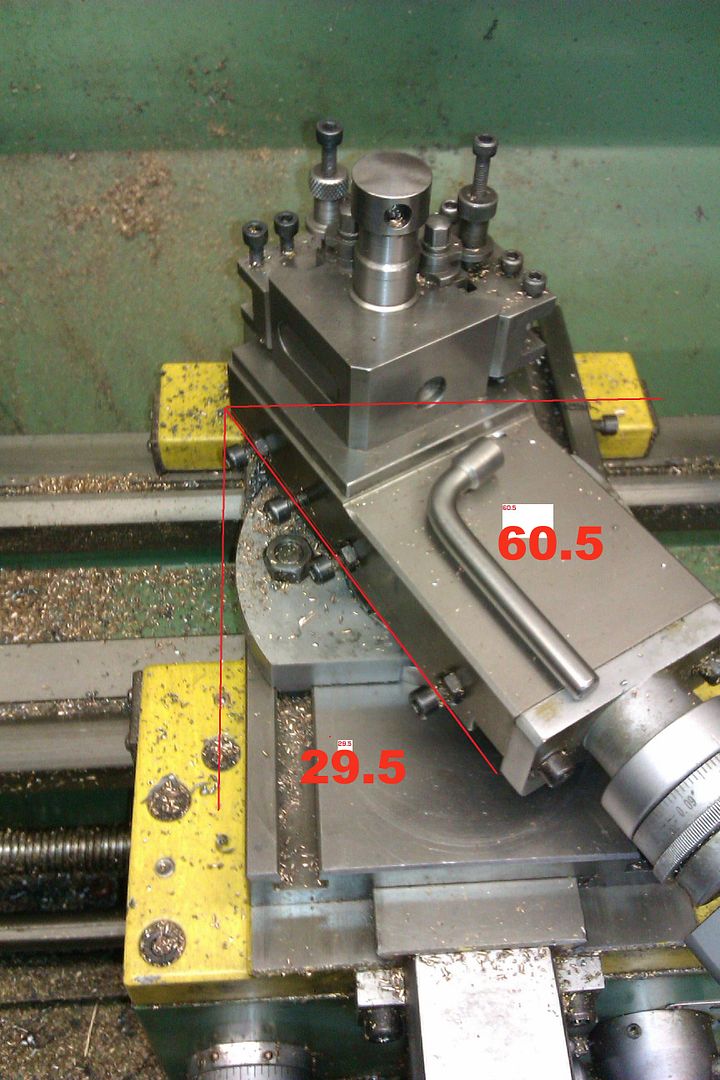Rowan
Not backing the tool out of the thread before reversing has created a positional error between the thread cut going forwards and that going backwards. Basically due to the backlash in the half nut and drive which has to be taken up before the tool moves when the machine is reversed.
If you are worried about advancing the tool a few thou for each cut after moving it clear of the work to reverse I suggest you adopt the technique I was taught as "zero-to-zero" or "zero-2-zero" as the lathe keeps track of everything for you automatically.
Basic idea is to use the top slide to apply the cut and the cross slide to withdraw the tool before reversing and bring it back to a base position ready for the next cut. With some refinements so it keeps track of total depth of cut and sorts out the angle of attack of the tool.
Start by setting the topslide at a little less than the half angle of the thread. Anything close will do. I use 25° for both UK (whitworth) 55° and metric / American 60° threads. Mount the tool with its tip at exactly right angles to the work. As usual a lovely picture from Jason showing the fundamental set-up but I'm too lazy to bother getting the angle dead nuts and figuring out exactly what the in-feed should be. So I make the lathe do the maths!
Adjust the cross slide so the tool contacts the work and set the cross slide dial to zero.
Pull back the cross slide for a bit of clearance and move the saddle back until the tool is clear of the work.
Feed the cross slide forward by the depth of the thread you intend to cut and re-set the dial to zero.
Set the dial on the topslide to zero and move back to clear the work.
Move the topslide forwards to apply a small cut and take the first cut.
At the end of the cut withdraw the tool using the cross slide and run back to the beginning.
Move the cross slide back to zero and apply a bit more cut using the top slide.
Make the second cut, withdraw the tool again using the topslide and return ready to set the cross slide back to zero and apply the next cut with the topslide.
Repeat the process, taking occasional spring cuts as needed without moving the topslide , until the topslide has been fed forward so the dial reads zero. This will be the last cut as the tool has now been moved forwards by the depth of thread you set at the beginning. Make several spring cuts until you are sure the thread has cleanly formed and check the size.
Odds are that a home ground tool will be too long and too sharp in the point so the thread you made won't fit due to not being cut deep enough. Easy enough to deepen it with another cut or three past zero until it is the right size. If you have more than one to do then reset your zeros for the correct depth and all the rest will come out right.
If you are using a full profile insert or chaser it will be right first time!
The great thing about this method is that you do all your setting up at the beginning then just work until both dials read zero. Even if the result isn't quite right at least you know what you set and what you have done so you have a base to figure out what went wrong.
Clive
Edited By Clive Foster on 03/09/2022 18:45:21
Edited By Clive Foster on 03/09/2022 18:46:18
Huub.







